Innovation update October 2019
Innovation update October 2019
Welcome to the latest issue of our innovation newsletter. In this issue we look at the upcoming Low Carbon Networks & Innovation conference and the next steps for our Smart Street project.
Showcasing our industry
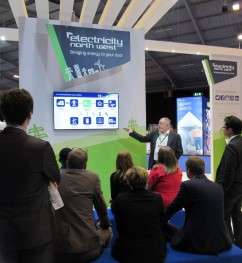
On 30-31 October 2019, we'll be attending the ninth annual Low Carbon Networks & Innovation conference at the Scottish Event Campus, Glasgow. The conference brings together experts from across the electricity sector to showcase the latest innovative technology which is crucial in supporting the transition to a zero carbon future.
Last year over 1,000 delegates from across the industry attended the two-day event to discuss network innovation projects, through a programme of breakout and workshop sessions. This year we'll be sharing the latest findings from our Celsius, Value of Lost Load 2 (VoLL 2) and Sentinel projects as part of the following sessions:
- Celsius with Delroy Ainsworth, Thursday 31 October, 9.30 – 11.00am, Network Improvements and System Operability
- VoLL 2 with Tracey Kennelly, Thursday 31 October, 11.30 – 1.00pm, Customer and Stakeholder Focus
- Sentinel with Dr Geraldine Paterson, Thursday 31 October, 2.30 – 4.00pm, Deep Dive
- Clarity on Dispatch of Services with Ian Povey, Thursday 31 October, 2.30 – 4.00pm, Open Networks Project.
We will also be holding informal ‘on-stand’ presentations at Stand M03:
- Smart Street with Ben Ingham and Elizabeth Pattison, Wednesday 30 October, 1.45 – 2.15pm
- Community Energy with Helen Seagrave, Thursday 31 October, 11.00 – 11.30am
- VoLL2 with Tracey Kennelly and Frazer Nash Consultancy, Thursday 31 October, 1:45 – 2:15pm.
In addition to the above we will be holding informal drop-in sessions where you will have the opportunity to meet our discretionary funding manager, Elizabeth Pattison:
- Wednesday 30 October, 8.30 – 9.00am and 10.30 – 11.30am
- Thursday 31 October, 08.30 – 9.30am and 11.00 – 11.30am.
If you would like to register to attend this year's conference, visit the conference website.
Please come and have a chat to our innovation team on Stand M03. We look forward to seeing you there.
Next steps for groundbreaking Smart Street project
 News just in – last week we heard that our Smart Street project has been awarded £18 million from Ofgem's Innovation Roll-out Mechanism (IRM) which could save up to £60 a year off customers’ electricity bills.
News just in – last week we heard that our Smart Street project has been awarded £18 million from Ofgem's Innovation Roll-out Mechanism (IRM) which could save up to £60 a year off customers’ electricity bills.
Starting next year, we will install Smart Street technology at 180 distribution substations over a three-year period, targeting areas with a high uptake of low carbon technologies, such as electric vehicles and solar panels, particularly where these overlap areas of fuel poverty. This will bring benefits for up to 45,000 customers, reducing electricity consumption by 5-8% per year.
In the longer term this roll-out will save a massive 143,860 tonnes of carbon between now and 2050, the same as removing 2,570 cars from our roads every year.
The original Smart Street project was funded by the Low Carbon Networks Fund and was completed in April 2018. It proved that by installing intelligent software and innovative devices, the Smart Street system can make our low voltage network run more efficiently which brings a number of benefits to customers. It can reduce electricity bills, reduce carbon emissions and provide more flexible solutions to help us connect low carbon technologies to the network – all without impacting power quality.
The IRM provides funding to implement proven innovations like Smart Street which will provide long-term value for money to customers and deliver environmental benefits.
Smart Street is part of our ‘Leading the North West to Zero Carbon’ plan which has earmarked £63.5m over the next four years to support the North West’s decarbonisation targets. Find out how we're making our plan a reality in our new video or find out more about Smart Street on our webpage.
Sentinel project to deliver fault radar
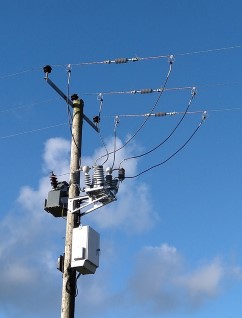 Our £4 million Sentinel project, funded under the Network Innovation Allowance, is trialling a fault ‘radar’ detection and location system on our high voltage overhead network, which will improve safety and customer service.
Our £4 million Sentinel project, funded under the Network Innovation Allowance, is trialling a fault ‘radar’ detection and location system on our high voltage overhead network, which will improve safety and customer service.
Faults on overhead lines can be difficult to find and we rely on engineers patrolling large areas on foot to locate damaged equipment. This means some of our customers will be without power until the fault can be located and repaired. This is particularly true in storm conditions. Storms mainly affect the rural areas of our network which are predominantly constructed from long lengths of overhead line and which may be impeded by overgrown trees.
As well as affecting our customers' electricity supply, these faults can become a safety hazard for the public and our own people if they aren’t detected and repaired.
The Sentinel project is trialling new sensors on our overhead lines which will enable us to detect and repair broken or damaged equipment and low hanging conductors more quickly. We are now halfway through the installation of 150 sensors which will be completed by December. We have also developed a test methodology which will be refined over the next few months, using data generated from the new sensors. A 12-month trial period will follow to allow us to quantify the full safety and customer benefits of the Sentinel project.
Understanding the value of lost load
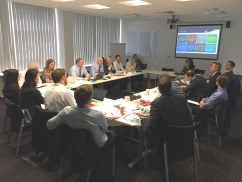
As part of our Value of Lost Load (VoLL) project, we surveyed more than 3,000 customers from the North West and a further 3,000 from across the UK to gain an understanding of the value that different customers place on a loss of energy supply.
The research, funded under the Network Innovation Allowance, showed that there is a huge difference in the value that customers place on their security of supply and the customer groups most affected by interruptions include the fuel poor. The value of lost load for fuel poor customers is almost double the average amount. The differences and overall increase in VoLL is thought to reflect a greater dependency on electricity and changing customer needs and expectations.
Understanding VoLL is important as it is used to determine network planning and investment strategies. The electricity industry uses a financial model to calculate the cost and impact of power cuts which guides many important investment decisions. At present this model values one customer’s power cut the same as another, which our study suggests may no longer be appropriate.
We are conducting further research into the implementation of a revised VoLL model. Earlier this month we held a workshop with Ofgem and colleagues from other network operators to discuss the practicalities and regulatory implications for implementing an alternative variable VoLL model, which would reflect different customers’ needs and enable network operators to make smarter investment decisions.
You can see the slides and a video from the event on our webpage.
Celsius project hots up
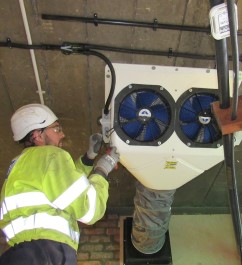 With just a few months to go before the end of the Celsius project, we have already demonstrated the benefits of installing cooling techniques in our substations and we have shown that a greater understanding of an asset's temperature enables us to release extra capacity.
With just a few months to go before the end of the Celsius project, we have already demonstrated the benefits of installing cooling techniques in our substations and we have shown that a greater understanding of an asset's temperature enables us to release extra capacity.
The first stage of the project, funded under the Network Innovation Competition, was to install monitoring equipment to record temperature and load measurements at 520 substation sites, selected to be representative of 80% of the national substation population. Data from the monitoring equipment was analysed to develop a ‘thermal ratings tool’ which will enable network operators to understand what additional capacity can be released from their substations.
The second stage of the project was to install active cooling techniques to improve ventilation at 40 of the original trial sites and passive techniques such as painting, providing shade or additional vents, at a further 60 sites, which were monitored for at least 12 months.
Analysis of the data from the monitoring period has successfully demonstrated the effectiveness of the different techniques. The learning from this work will now be incorporated into the thermal ratings tool which in turn will be adopted into our business as usual processes.
As part of the project we carried out surveys to understand if customers living near the trial sites found Celsius techniques as acceptable as traditional methods of network reinforcement. The research showed that 89% of customers in the trial areas found the cooling techniques installed at their nearest substation acceptable, compared to 62% for traditional solutions. Only 15% of customers noticed any change associated with Celsius.
Empowering our Communities: Our new £250k fund
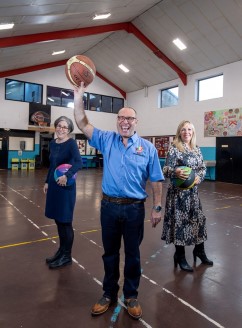 We are inviting groups from across the North West to bid for a quarter of a million pounds-worth of funding to address energy issues across the region.
We are inviting groups from across the North West to bid for a quarter of a million pounds-worth of funding to address energy issues across the region.
The ‘Empowering our Communities Fund' has been launched to help communities become more resilient, through generating their own energy, supporting energy efficiency or promoting information to help customers in vulnerable circumstances.
It's a newly-created fund following the amalgamation of our successful Powering our Communities Fund and Vulnerable Customer Grants. The combination of the two funds means more money is now available to help improve communities throughout the North West.
We have created broad criteria, as we recognise that communities have their own innovative ideas on how they can increase resilience and bring community-wide benefit.
We are inviting applications from a range of organisations including community benefit societies, industrial provident societies, charities, schools and local authorities. Funding from £1,000 - £50,000 is up for grabs and can be used to support a variety of activities including producing materials, buying equipment, supporting staff time or technical expertise.
Applications must demonstrate community involvement or local benefit, and the majority of the project must be located in the Electricity North West licence area.
The deadline for applications is at midnight on Friday 8 November 2019. Successful applicants will be notified in February 2020 for projects to start in April 2020.
To find out more and to watch our video, visit our webpage.
Useful links
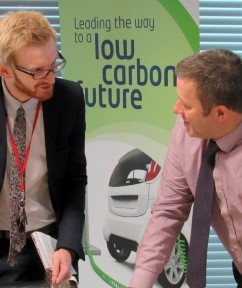 You can find out more detailed information about our strategy and all of our innovation projects using the following links:
You can find out more detailed information about our strategy and all of our innovation projects using the following links:
- Our innovation strategy
- Our LCN Fund project Smart Street
- Our NIC project Celsius
- Our NIA projects
- Meet the Electricity North West innovation team
- The Electricity Networks Association smarter networks portal
Or contact us at innovation@enwl.co.uk.